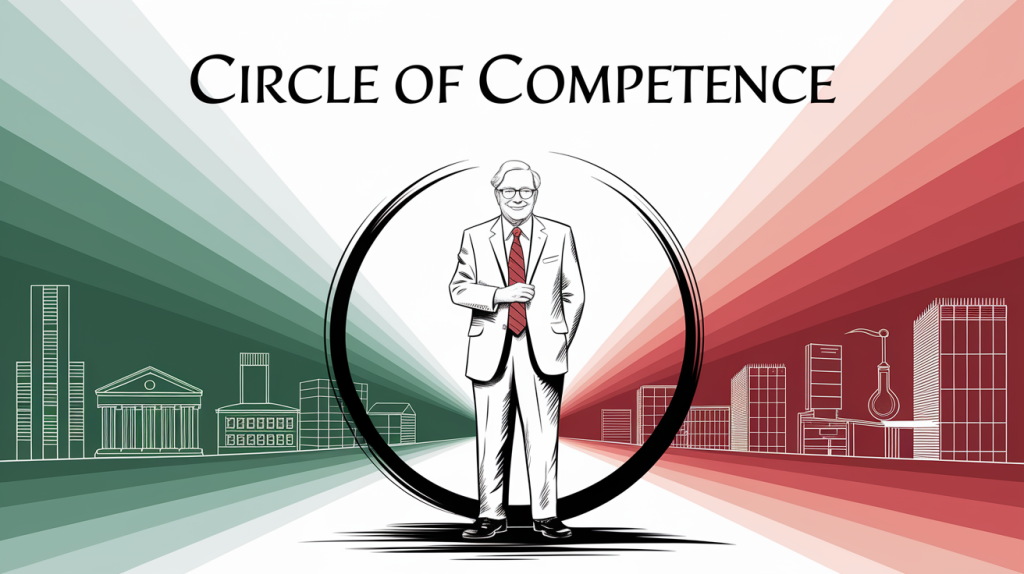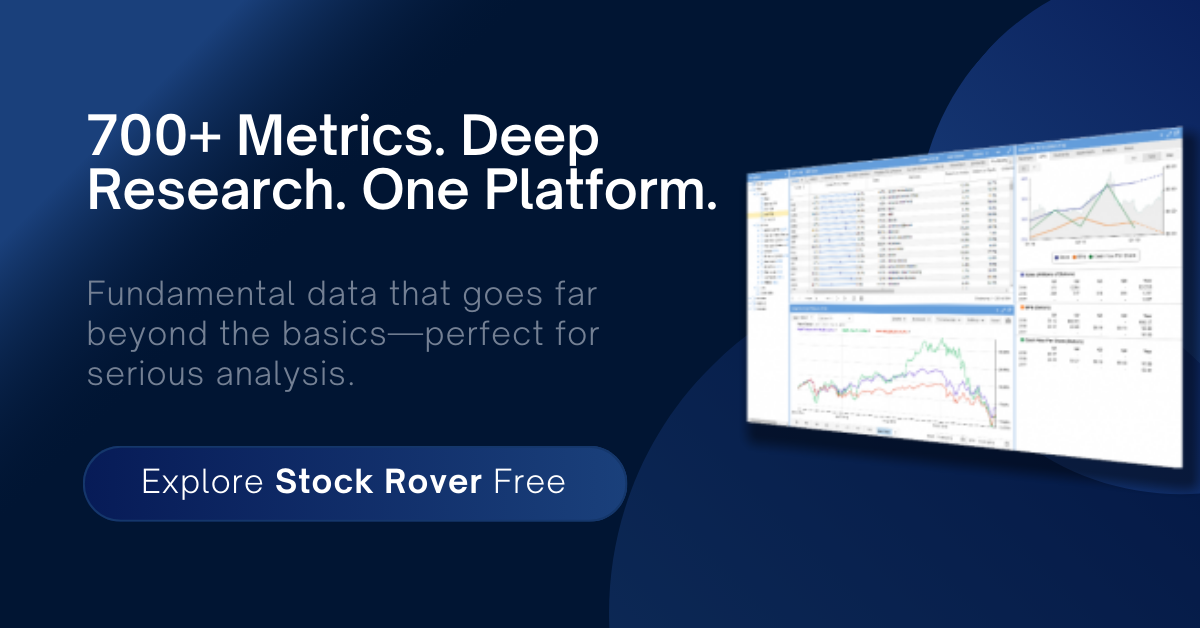
In investing, it is easy to get carried away. I remember investing heavily in the internet stocks in the early 2000s without knowing much about what they do. I was in the IT industry so I assumed I knew technology. I had bitten off more than I could chew.
Most investors think they understand their limits. But when real money is on the line, most of them lie—to themselves. That lie is the fastest path to underperformance, frustration, and in many cases, permanent capital loss. Not because they’re careless, but because they’re human. We’re hardwired to overestimate our abilities, especially in areas that involve risk and reward. That’s why identifying your true investing strengths—and weaknesses—is so vital.
As you read this, it is important to remember that most of this “self awareness” comes over time as you make mistakes and test your boundaries.
Warren Buffett’s “Circle of Competence” is one of his most powerful yet least understood principles. It doesn’t require a CFA. It doesn’t require decades of market experience. It only requires one thing: radical self-awareness. And when applied rigorously, it can serve as a compass that keeps you from wandering into dangerous waters, while guiding you deeper into areas where your insights compound with time.
Let’s walk through what your real circle of competence looks like, how to identify its boundaries honestly, and how to expand it safely over time without falling for your own illusions.
What Is a Circle of Competence—and Why It’s More Than Just Industry Knowledge
Buffett’s idea is simple: focus only on businesses you truly understand. But most investors translate that into “invest in industries I recognize” or “businesses I’ve read about.” Recognition is not the same as understanding. Familiarity can be deceiving—it creates the illusion of knowledge without the substance to back it up.
Your circle isn’t just about knowing a sector like tech or financials. It’s about having a unique understanding of how value is created, what the key drivers are, and where the risks lie. It’s the ability to connect the company’s business model to its financials and to see how management’s decisions will affect future performance. It also means you can anticipate the consequences of those decisions without being surprised by market volatility or quarterly noise.
That level of understanding doesn’t come from skimming headlines or earnings calls. It comes from a real edge—professional experience, repeat analysis, or years of studying an industry deeply. And more importantly, it comes from developing your own mental models, not borrowing them from someone else.
When I worked as a management consultant, we quickly specialized in a practice area. This could either be an industry, e.g. Automotive, or it could be a functional area such as operations. Senior consultants would have spent years working within their practice and they knew it deeply. It is the same level of understanding that you need as an investor. You need to get to the point where you read a news article about a conflict in Ethiopia and you have a good sense of what it will do to the coffee prices at Starbucks.
How to Honestly Identify Your Circle (Hint: It’s Smaller Than You Think)
Here’s how to draw the true boundaries of your circle:
Start by looking at companies where your predictions have consistently been correct. These are likely areas where your intuition and analysis align with market outcomes. Next, identify sectors where you have personal or professional experience. This gives you insights others may not have. Review past investments where your thesis was right for the right reasons. If you were lucky, not right, that doesn’t count. Finally, be skeptical of areas where you rely heavily on others’ opinions. If you can’t explain a company’s business model or thesis without quoting someone else, it’s probably outside your circle.
As you research companies and build your investment thesis, take notes. You can jot down your thoughts, reasons, expectations, etc. Make it a habit of reviewing these notes when you exit the investment. This will tell you how well you understood this business and give you insights you can use in the future investments.
Most investors tend to mistake shallow conviction for deep understanding. This is where performance suffers. One key indicator: can you write a one-page memo explaining why you own the stock and what would make you sell it? If not, you may be outside your circle without knowing it.
This isn’t easy. Your circle of competence is probably far smaller than you think. That’s okay. In fact, it’s a strength. A narrow, well-defined circle allows you to act with clarity, confidence, and speed—while others hesitate or overthink.
The edge comes from knowing where you do not belong.
The Dangerous Temptation to Expand Too Fast
A few wins can create dangerous confidence. Investors often mistake luck for skill and start wandering into unfamiliar territory. The markets are full of graveyards built on overconfidence—especially after a bull run. Expansion of competence must be earned, not assumed.
This happens most often in adjacent industries that appear similar but have different economic drivers, hot sectors driven by narratives instead of fundamentals, and stocks recommended by others where you trust the messenger but don’t understand the business. You end up taking positions based on secondhand conviction. That’s not investing. That’s mimicking.
Buffett and Munger avoided tech for decades not because they were anti-technology, but because they weren’t confident in their ability to predict outcomes. Their restraint was a feature, not a flaw. They waited until they understood Apple as a consumer brand with hardware and service economics—not just a tech company.
That level of clarity only comes when you’ve seen through the fog of market hype and are left with core economic truths.
Growing Your Circle the Right Way
Yes, your circle can grow—but only through earned understanding. It’s not something that happens passively. You must build it brick by brick, business by business.
If you want to expand it, study one company deeply at a time. Track it over multiple quarters and learn its industry structure, value chain, pricing power, and regulatory environment. Follow its competitors, suppliers, and customers to get a 360-degree view. Read old 10-Ks, listen to archived calls, and learn how the company navigated previous cycles. Only invest once your insights are your own—not someone else’s.
Don’t mistake superficial familiarity for real competence. Real knowledge is hard-won. But once it’s yours, it gives you an unshakable foundation. You’ll not only make better decisions, you’ll make them faster, with more conviction—and sleep better at night.
This process takes time, but it scales. Each new circle you earn adds another layer to your investing foundation. And over years, that stack of competence grows into a fortress.
The Circle as a Risk Management Superpower
Staying within your circle doesn’t make you conservative. It makes you precise. It allows you to take bold action when it matters—and avoid disasters when it doesn’t. I have known investors who only invest in a single sector – because that is all they know and they know it well.
You avoid unknown unknowns. You sidestep crowded trades built on herd thinking. And you hold positions with conviction, not hope. You reduce portfolio churn, resist FOMO, and avoid the endless distraction of shiny objects.
More importantly, you know when to say, “I don’t know.” That simple phrase, rarely uttered in investing circles, may be your greatest asset. It prevents you from reaching for yield, overpaying for growth, or falling into the trap of complexity.
You won’t catch every trend. You won’t chase every rally. But you will stay in the game—and compound steadily over time.
That’s the mark of a real investor.
How We Use This Principle Inside Our Portfolios
I have turned down Facebook when it was $35/share. I have avoided most of the Mag 7 stocks since I do not understand the industry trends and whether they will last. I don’t mind missing out on some. There are other opportunities no one else is looking at and I can come in and profit.
Every stock in the Premium and Founder’s Club portfolios fits squarely within our circle of competence. We don’t chase shiny objects. We build our edge by sticking to what we know deeply—industries we’ve studied for years, businesses we understand inside out, and management teams we can read like a book.
We use this principle to screen out noise. No position is added unless it passes our internal clarity test: Can we clearly articulate the edge, the upside, the risks, and the reasons this business fits our strategy? Can we hold it through drawdowns and explain our thesis without hesitation?
This is why our strategies work. We don’t need to know everything. We just need to know where our edge is—and stay there. It keeps us disciplined when markets get euphoric, and opportunistic when fear returns.
Ready to compound inside your true circle of competence?
Join our Premium membership to access carefully selected small-cap value opportunities where the edge is clear, the margin of safety is built in, and the risk of self-deception is eliminated. Every investment we make reflects years of accumulated advantage—and a commitment to staying honest about what we truly understand.

Shailesh Kumar, MBA is the founder of Astute Investor’s Calculus, where he shares high-conviction small-cap value ideas, stock reports, and investing strategies.
His work has been featured in the New York Times and profiled on Wikipedia. He previously ran Value Stock Guide, one of the earliest value investing platforms online.
Subscribe to the Inner Circle to access premium stock reports and strategy insights.
Featured in:








